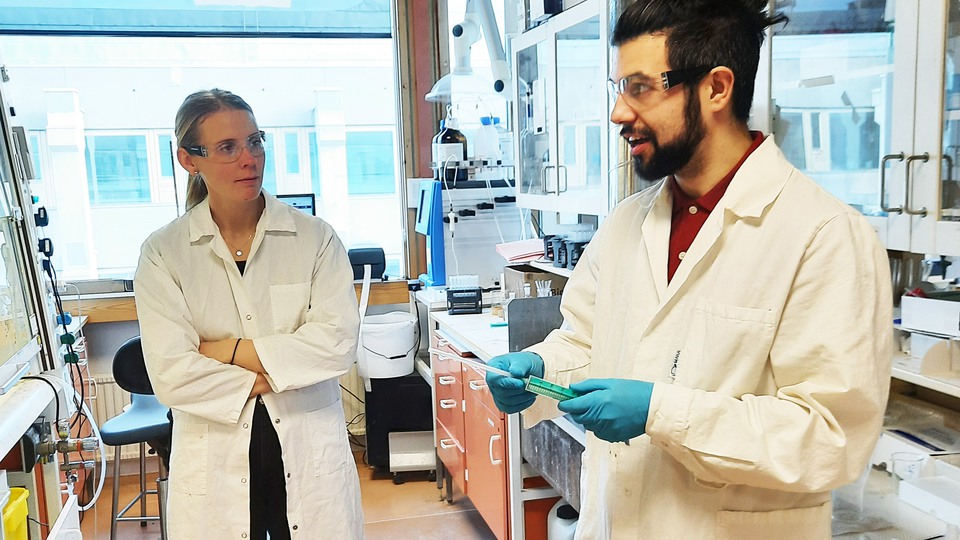
Therese Kärnman, IVL Swedish Environmental Research Institute, and Pedro Tortajada Palmero, Stockholm University, collaborating on one of the case studies of Mistra SafeChem.
Case studies
Case studies are an important part of the Mistra SafeChem programme. With a transdisciplinary approach questions relevant to the programme vision “to enable and promote the expansion of a safe, sustainable and green chemical industry” can be researched.
In the case studies of Mistra SafeChem, the tools and workflows developed in the programme are brought together and evaluated with the use of real scenario challenges. Feedback is collected on how the tools perform, how they match the needs of the industry and how they can be developed further.
Here we have compiled information about many of the case studies in Mistra SafeChem, their contact persons and references that tell more.
Textile recycling: Optimizing sustainability
In this case study cotton-based textiles are converted into cellulose nanocrystals (CNC) using acid hydrolysis in a water-based system.
Sustainability assessment of a novel hydrogenation reaction process
In this case study a Ni-catalyzed electrochemical reduction of alkynes to Z-alkenes, and alkenes to alkanes, in water-based reaction medium, is developed.
Safer and more sustainable by design in discovery chemistry
In this case study, a biocatalytic pipeline for sustainable and safe discovery chemistry is developed and validated.
Indoor air quality – materials inside the car that do not cause health effects
A car cabin is a microenvironment that the human population is exposed to and that is affected both by ventilation and emissions from interior materials.
Cyclosiloxanes and silicones in cosmetics
In this case study the environmental effects of silicones are studied and when necessary, suitable substitutes or alternative processes are identified or developed.
Production of a low-risk building block chemical for surfactants
In this case study methods for the inclusion of green chemistry and environmental assessment in the production scale-up of a specialty chemical is developed and tested.
Consequential LCA to evaluate environmental sustainability in valorization of forest residues
Use of consequential LCA to evaluate environmental sustainability benefits by using kraft lignin in different applications, such as valorization of forest residues.
-
2024-06-28 | newsImpressive achievements of Mistra SafeChem in phase 1
-
2024-06-19 | newsNew report: Crystal Engineering for Water Treatment
-
2024-05-17 | newsSee the full agenda for our final webinar
-
2024-05-15 | newsThe Mistra SafeChem in silico toolbox presented at the SETAC conference
-
2024-04-03 | newsFour more years – Mistra SafeChem gets go-ahead for second phase

